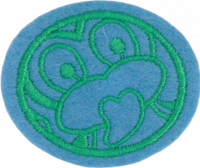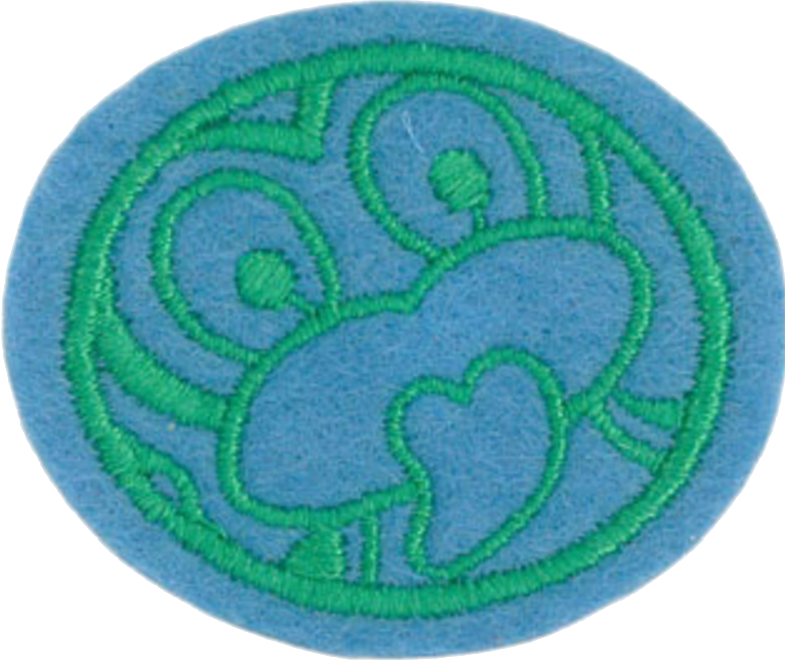Difference between revisions of "AY Honors/Māori Lore/Requirements 2/es"
(Created page with "</noinclude>¿De dónde consideran los maoríes que llegaron a Nueva Zelanda? <noinclude>") |
(Created page with "</noinclude>Dormir <noinclude>") |
||
| Line 93: | Line 93: | ||
<noinclude></noinclude><section end=req2b /></b> | <noinclude></noinclude><section end=req2b /></b> | ||
| − | :<b>c. <section begin=req2c /><noinclude> | + | :<b>c. <section begin=req2c /><noinclude></noinclude>Explicar lo que es el gran mito de las migraciones. ¿Quién fue el autor de este mito? ¿Qué eran las canoas que llegaron en esta migración y de dónde vinieron? |
| − | </noinclude> | + | <noinclude></noinclude><section end=req2c /></b> |
| − | <noinclude | ||
| − | |||
| − | :<b>d. <section begin=req2d /><noinclude> | + | :<b>d. <section begin=req2d /><noinclude></noinclude>Dibujar o trazar un mapa de Nueva Zelanda que muestre todas las grandes zonas tribales y hacer la canoa para cada uno. |
| − | </noinclude> | + | <noinclude></noinclude><section end=req2d /></b> |
| − | <noinclude | ||
| − | |||
| − | :<b>e. <section begin=req2e /><noinclude> | + | :<b>e. <section begin=req2e /><noinclude></noinclude>¿Por qué fue Rangitoto llamado «Rangitoto»? |
| − | </noinclude> | + | <noinclude></noinclude><section end=req2e /></b> |
| − | <noinclude | ||
| − | |||
| − | <b>3. <section begin=req3 /><noinclude> | + | <b>3. <section begin=req3 /><noinclude></noinclude>Visitar o hacer una investigación de una «marae» con un grupo que ha sido llamado a un «hui». Escribir un informe sobre los acontecimientos que tomaron lugar desde el momento en que llegaron a la «marae» hasta la hora de irse. Indicar el nombre de la «marae», su localidad y la tribu a la que está afiliado. |
| − | </noinclude> | + | <noinclude></noinclude><section end=req3 /></b> |
| − | <noinclude | ||
| − | |||
| − | <b>4. <section begin=req4 /><noinclude> | + | <b>4. <section begin=req4 /><noinclude></noinclude>Relatar brevemente las costumbres observadas en cada uno de los siguientes eventos: |
| − | </noinclude> | + | <noinclude></noinclude><section end=req4 /></b> |
| − | <noinclude | ||
| − | |||
| − | :<b>a. <section begin=req4a /><noinclude> | + | :<b>a. <section begin=req4a /><noinclude></noinclude>Mate |
| − | </noinclude>Mate | + | <noinclude></noinclude><section end=req4a /></b> |
| − | <noinclude | ||
| − | |||
| − | :<b>b. <section begin=req4b /><noinclude> | + | :<b>b. <section begin=req4b /><noinclude></noinclude>Los horarios de comer |
| − | </noinclude> | + | <noinclude></noinclude><section end=req4b /></b> |
| − | <noinclude | ||
| − | |||
| − | :<b>c. <section begin=req4c /><noinclude> | + | :<b>c. <section begin=req4c /><noinclude></noinclude>Discursos |
| − | </noinclude> | + | <noinclude></noinclude><section end=req4c /></b> |
| − | <noinclude | ||
| − | |||
| − | :<b>d. <section begin=req4d /><noinclude> | + | :<b>d. <section begin=req4d /><noinclude></noinclude>Dormir |
| − | </noinclude> | + | <noinclude></noinclude><section end=req4d /></b> |
| − | <noinclude | ||
| − | |||
| − | <b>5. <section begin=req5 /><noinclude> | + | <b>5. <section begin=req5 /><noinclude></noinclude>Explicar lo siguiente: |
| − | </noinclude> | + | <noinclude></noinclude><section end=req5 /></b> |
| − | <noinclude | ||
| − | |||
:<b>a. <section begin=req5a /><noinclude><div lang="en" dir="ltr" class="mw-content-ltr"> | :<b>a. <section begin=req5a /><noinclude><div lang="en" dir="ltr" class="mw-content-ltr"> | ||
Revision as of 18:26, 29 April 2021
Nivel de destreza
1
Año
Desconocido
Version
27.12.2025
Autoridad de aprobación
División Norteamericana
1. Definir los siguientes términos de uso común:
- a. Marae
- b. Pōwhiri
- c. Karakia
- d. Ka Mate
- e. Waiata
- f. Korero
- g. Haka
- h. Kuia
- i. Tāne
- j. Wero
- k. Mana
- l. Manuhiri
- m. Hongi
- n. Hui
- o. Poroporoaki
- p. Whānau
- q. Tangi
- r. Aroha
- s. Whakairo
- t. Koro
- u. Kaumātua
- v. Wahine
- w. Mihi
- x. Whaikōrero
- y. Tangata whenua
z
- z. Taonga
2. Hacer lo siguiente:
- a. Dibujar o trazar un mapa del mundo y mostrar con flechas las direcciones del asentamiento Polinesio.
- b. ¿De dónde consideran los maoríes que llegaron a Nueva Zelanda?
- c. Explicar lo que es el gran mito de las migraciones. ¿Quién fue el autor de este mito? ¿Qué eran las canoas que llegaron en esta migración y de dónde vinieron?
- d. Dibujar o trazar un mapa de Nueva Zelanda que muestre todas las grandes zonas tribales y hacer la canoa para cada uno.
- e. ¿Por qué fue Rangitoto llamado «Rangitoto»?
3. Visitar o hacer una investigación de una «marae» con un grupo que ha sido llamado a un «hui». Escribir un informe sobre los acontecimientos que tomaron lugar desde el momento en que llegaron a la «marae» hasta la hora de irse. Indicar el nombre de la «marae», su localidad y la tribu a la que está afiliado.
4. Relatar brevemente las costumbres observadas en cada uno de los siguientes eventos:
- a. Mate
- b. Los horarios de comer
- c. Discursos
- d. Dormir
5. Explicar lo siguiente:
- a.
What are the two Māori religions currently in use today, and what are some of their characteristics?
- b.
Briefly describe the Māori story of creation.
- c.
Briefly outline the story of Seventh-day Adventism among the Māori people.
- d.
What is the Māori attitude to religion in general?
6.
Make a sample tukutuku panel (approx 30 cm x 30 cm) OR a tipare OR a small flax mat/basket.
7.
Know how to correctly:
- a.
Greet people in Māori
- b.
Hongi
8.
Demonstrate the following:
- a.
What are five different pastimes enjoyed by Māori children in former times?
- b.
Learn how to do three string figures and walk on stilts.
9.
Do one of the following:
- a.
If possible, visit an old pā site and make a brief written report on what you could see.
- b.
Research briefly the history and architecture of New Zealand’s native people (Māori) pā sites. Then, visit ruins or a reenactment site of native peoples in your region or a region you are visiting. Report on your experience.
- c.
Research New Zealand (Māori) pā sites as well as native peoples villages and/or fortresses that were built in your locality. Write, draw, illustrate, create models, or explain what a pā was, and how it compares and contrasts with the sites built by native historic peoples in your region.


